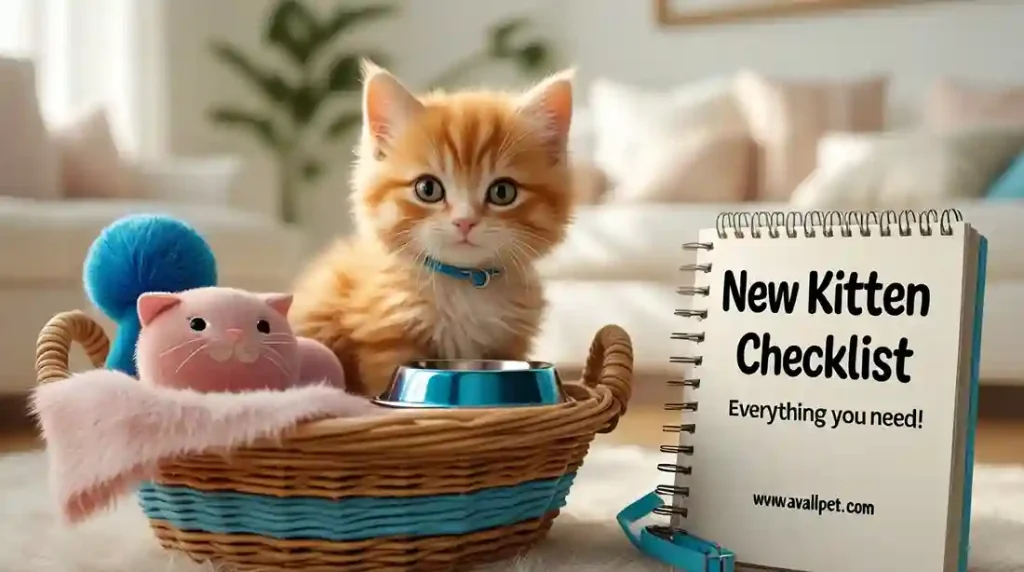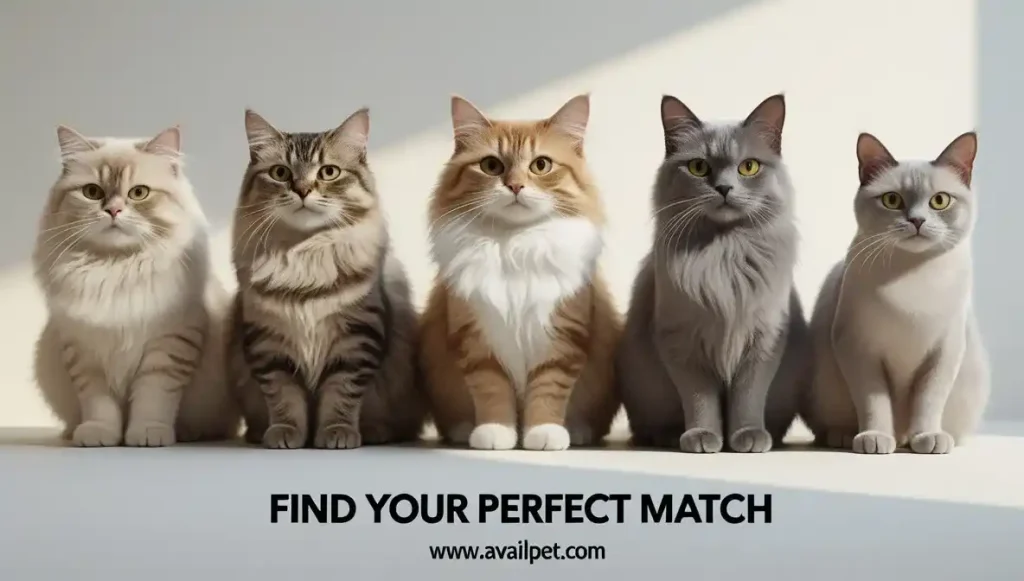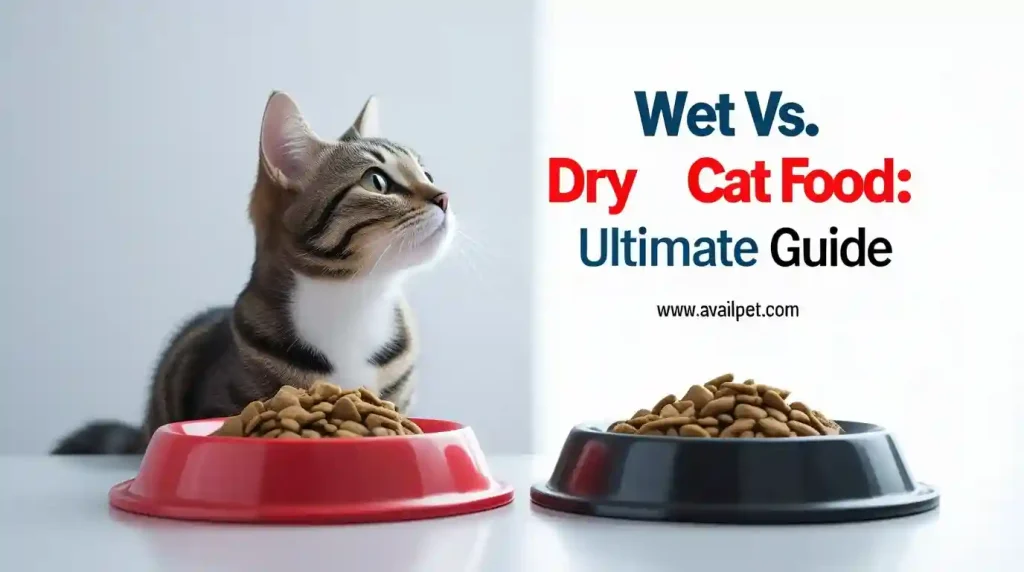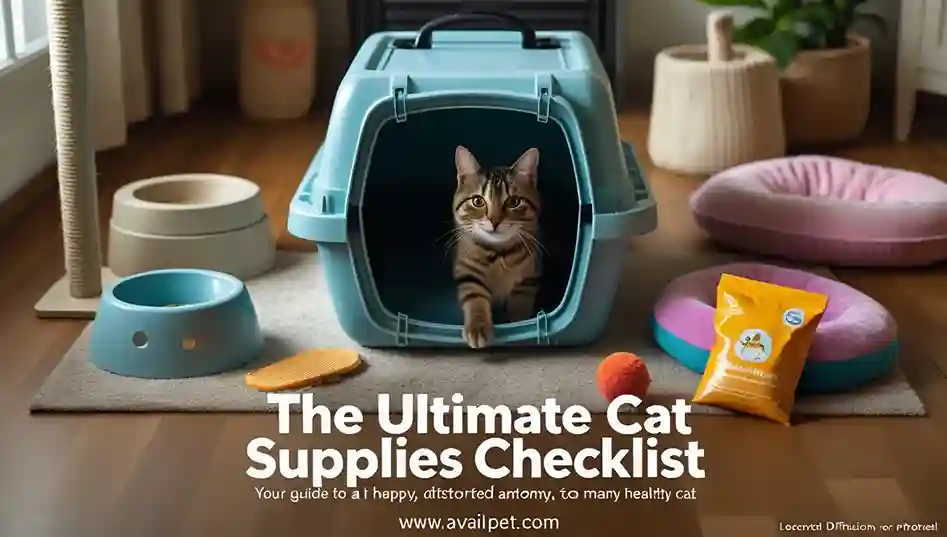Ever watched your cat and found yourself utterly bewildered, thinking, “Why on earth are you doing that?” You’re not alone. Every cat owner has been there—witnessing a bizarre feline antic that defies all human logic. That sudden 3 AM sprint through the house, the intense, chattering stare at a bird outside, or the perplexing habit of kneading your stomach with relentless determination. These aren’t random acts of a quirky pet; they are messages. Your cat is communicating with you in a language of actions, not words. Unlocking the meaning behind these common cat behaviors is the key to deepening your bond, solving behavioral puzzles, and truly understanding the fascinating creature who shares your home.
This comprehensive guide is your decoder ring. We’re diving deep into 25 of the most frequent, funny, and sometimes frustrating habits common cat behaviors. From the gentle head butt to the mysterious midnight “zoomies,” we’ll explain the why behind the what, turning your confusion into clarity. Get ready to finally understand what your cat has been trying to tell you all along.
Affection & Bonding Behaviors
Think your cat is aloof? Think again. The ways cats show love are often subtle, but once you know what to look for, you’ll see your feline friend is constantly expressing their affection. These behaviors are the cornerstone of your unique bond.
1. Kneading (Making Biscuits)
What it looks like: Your cat rhythmically pushes their paws in and out against you, a soft blanket, or even the air, often with claws gently extended and retracted.
Why they do it: This behavior originates in kittenhood. Nursing kittens knead their mother’s belly to stimulate milk flow. In adulthood, the behavior continues as a sign of ultimate contentment, comfort, and security. It’s a throwback to their first moments of happiness and safety.
What it means: “I am happy, relaxed, and I feel completely safe with you.” It’s a huge compliment and a sign of deep trust.
If the claws are a bit much, gently place a thick blanket between you and your cat instead of scolding them.
This comforting behavior, often called ‘making biscuits,’ has several surprising origins. For a deep dive into why cats knead, from kittenhood to adulthood, see our full guide.
2. Head Butting (Bunting)
What it looks like: Your cat deliberately bumps their head or the side of their face against your hand, leg, or even your face.
Why they do it: Cats have scent glands concentrated on their cheeks, chin, and the base of their tail. When they rub against you, they are depositing their scent, effectively marking you as “theirs.” It’s a form of scent-marking and social bonding.
What it means: “You are part of my family and my safe social group.” It’s a greeting and an affirmation of your bond.
You can return the affection by gently petting them around the cheeks and chin where their scent glands are.
3. Slow Blinking (Cat Kisses)
What it looks like: Your cat looks at you with relaxed, half-closed eyes and blinks very slowly, often holding their eyes closed for a second.
Why they do it: In the feline world, closing one’s eyes in the presence of another is the ultimate sign of trust. It means they feel safe enough to let their guard down around you.
What it means: “I love and trust you completely.” This is often called a “cat kiss.”
You can “say it back” by slowly closing and opening your own eyes while gazing softly at them. It’s a powerful way to build connections of common cat behaviors.
You can even learn to ‘talk’ back! Discover how to tell your cat ‘I love you’ and build trust in our article on the cat slow blink meaning.
4. Purring (Not Always Happiness)
What it looks like: That familiar, soft, rumbling vibration, most often when your cat is being petted or is curled up contentedly.
Why they do it: While purring is a primary signal of contentment, it’s also a self-soothing mechanism. Cats may also purr when they are in pain, stressed, or even when giving birth. The vibrations are thought to have healing properties and can promote bone and tissue regeneration.
What it means: Context is key! Usually, it’s “I am happy and content.” But it can also mean “I am hurt or scared and trying to calm myself.”
Look at the situation. A purring cat at the vet is likely anxious, while a purring cat on your lap is blissful. It’s really common cat behaviors.
5. Grooming You
What it looks like: Your cat uses their rough tongue to lick your hand, hair, or even your face.
Why they do it: In cat colonies, mutual grooming (allogrooming) is a major social activity that strengthens bonds between members. By grooming you, your cat is including you in their colony and showing care.
What it means: “You are one of us, and I care about you.” It’s a sign of great affection and acceptance.
That sandpaper tongue can be rough! If it becomes uncomfortable, gently redirect them with a pet or a toy.
Communication & Vocalizations
Cats are far from silent. They’ve developed a complex vocabulary of sounds used almost exclusively to communicate with us. Understanding these vocal cues is like learning a new language—one that brings you closer to your feline friend.
6. The Meow (The Multifaceted Meow)
What it sounds like: A short, medium-pitched “meow.” This is the all-purpose sound, the “hello!” of the cat world. It can be a greeting, a request for food, or a simple announcement of their presence.
Why they do it: Adult cats rarely meow at each other. They’ve learned that we respond to this sound, so they use it to get our attention.
What it means: “I’m here!” “Pay attention to me!” or “I’m hungry!”
Pay attention to the context and tone. A short, high-pitched meow is often a friendly greeting, while a long, drawn-out meow might indicate a more demanding request.
While occasional meows are normal, a sudden change can be a signal. If you’re asking yourself, ‘Why is my cat meowing constantly?‘ our diagnostic guide can help you decipher the cause.
7. The Trill (The Chirpy Greeting)
What it sounds like: A pleasant, rolling, bird-like sound between a meow and a purr. It’s often a closed-mouth sound, like a “brrrrp” or “mrrrow.”
Why they do it: This is a friendly, welcoming sound. Mother cats use it to call their kittens, and your cat uses it to greet you or other pets they’re fond of.
What it means: “Hello, my favorite person!” or “Follow me, I want to show you something!”
A trill is almost always a positive sign. Try trilling back at your cat for a fun, bonding moment.
8. The Chatter (The Frustrated Hunter)
What it sounds like: A rapid, stuttering “ekekekek” or “ckckckck” sound, often made while they stare intently at a bird or squirrel out the window. Their jaw may even tremble.
Why they do it: This behavior is thought to be a mix of pent-up predatory excitement and frustration at not being able to reach the prey. Some experts believe it might be them mimicking the death-bite of their prey.
What it means: “I see it! I want it! But I can’t get to it!”
This is completely normal predatory behavior. Provide plenty of interactive wand toys to let them act out this hunting sequence safely indoors.
9. The Purr (The Comforting Rumble)
What it sounds like: A soft, low-frequency rumbling vibration that originates from the laryngeal muscles. It’s the sound of ultimate contentment for many cats.
Why they do it: While purring is a primary signal of contentment, it’s also a self-soothing mechanism. Cats may also purr when they are in pain, stressed, or even when giving birth. The vibrations are thought to have healing properties and can promote bone and tissue regeneration.
What it means: Context is key! Usually, it’s “I am happy and content.” But it can also mean “I am hurt or scared and trying to calm myself.”
Look at the situation. A purring cat at the vet is likely anxious, while a purring cat on your lap is blissful.
10. The Hiss (The Clear Back Off)
What it sounds like: A sharp, prolonged “tssssss” sound, like air escaping a tire. It’s often accompanied by a defensive posture: arched back, puffed-up fur, and bared teeth.
Why they do it: This is a purely defensive sound, meant to startle and warn a potential threat. It’s not a sign of aggression but rather a plea to be left alone.
What it means: “I am scared!” “Stay away!” or “This is my only warning!”
Never punish a hissing cat. They are communicating fear. Give them space and time to calm down.
A hiss is an unmistakable warning. If your cat is displaying this behavior, it’s crucial to understand why. Learn what to do and how to respond safely when your cat is hissing at you.
Play & Hunting Instincts
Even the most pampered house cat is a born predator at heart. These behaviors are driven by ancient instincts that are essential for their physical and mental well-being. Understanding them is key to providing a happy, enriched life for your feline.
11. The Midnight Zoomies (FRAPs)
What it looks like: A sudden, explosive burst of energy where your cat races madly through the house, often late at night or early in the morning, leaping off furniture and skidding around corners.
Why they do it: Known scientifically as Frenetic Random Activity Periods (FRAPs), this is a natural way for cats to release pent-up energy. Cats are crepuscular (most active at dawn and dusk), so this activity often aligns with their natural hunting hours.
What it means: “I have a ton of energy to burn!” It’s a normal, healthy release.
Combat the zoomies with a vigorous 10-15 minute play session before bedtime to tire them out. A tired cat is a sleepy cat!
These sudden bursts of energy, known as Frenetic Random Activity Periods (FRAPs), are usually normal. We explore the reasons and how to manage them in our guide to cat zoomies.
12. The Butt Wiggle Before Pouncing
What it looks like: That iconic, adorable butt wiggle your cat does right before they launch themselves at a toy, a treat, or sometimes your unsuspecting ankles.
Why they do it: This isn’t just for show. The wiggle helps them shift their weight to their hind legs and test their footing, ensuring they have the strongest, most stable launch possible. It’s a precision-tuning maneuver for the perfect pounce.
What it means: “Target acquired! Preparing for an attack!”
This is a sign of pure, focused play. Let the pounce happen on an appropriate toy to satisfy their instinct.
13. Bringing You “Gifts”
What it looks like: Your “helpful” hunter proudly presents you with a dead (or sometimes still alive) mouse, bird, or insect, often depositing it at your feet or on your bed.
Why they do it: This is a complex behavior. They may be trying to teach you, their clumsy human who clearly can’t hunt, how to provide for yourself. Alternatively, they may see you as part of their colony and are simply sharing their successful hunt.
What it means: “I’m providing for you” or “Here, learn from this.”
As gruesome as it is, don’t scold them. This is a natural, instinctive behavior. Calmly dispose of the “gift” when they’re not looking to avoid making them feel rejected.
While it may be unsettling to us, this is a deeply ingrained instinct. Understand the fascinating reasons behind this behavior in our article on why cats bring you dead animals.
14. Stalking & Ambushing
What it looks like: Your cat crouches low, eyes locked, tail twitching, before slinking slowly toward a target (a toy, another pet, or your feet under the blanket) and then launching a surprise attack.
Why they do it: This is the complete sequence of their natural hunting instinct: spot, stalk, pounce, and capture. It’s hardwired into their brain.
What it means: “My predator instincts are activated. This is practice.”
Provide outlets for this behavior! Use wand toys that mimic prey (like feathers or a “mouse” on a string) to let them act out this sequence safely.
15. Chattering at Birds/Squirrels
What it looks like: Your cat sits at the window, fixated on prey, making a rapid “ek-ek-ek” or chattering sound with their jaw, often while their tail twitches furiously.
Why they do it: The exact reason is debated, but it’s likely a combination of intense predatory excitement and frustration at being unable to reach the prey. Some theories suggest they are mimicking the killing bite they would deliver to the neck of their prey.
What it means: “I see it! I want it! I’m so frustrated I can’t get to it!”
This is normal behavior. Consider placing a sturdy bird feeder outside the window to provide “Cat TV,” or engage them with an interactive toy to redirect that pent-up energy.
Territorial & Natural Habits
A cat’s world is defined by scent and territory. These behaviors are fundamental to how they perceive their environment and establish a sense of security. They aren’t being “naughty”—they’re following deep-seated instincts to claim and feel safe in their space.
16. Scratching Furniture & Carpets
What it looks like: Your cat repeatedly drags their front claws down the side of your couch, your favorite armchair, or the carpet.
Why they do it: This is a multi-purpose instinct. Scratching visually marks territory with visible gouges, deposits scent from glands in their paws, and removes the dead outer layer of their claws to keep them sharp and healthy.
What it means: “This is mine,” and “I need to maintain my claws.”
Never punish scratching. Instead, provide appealing alternatives like sturdy, tall scratching posts covered in sisal rope. Place them near the furniture they’re targeting and use catnip to attract them.
This is a natural need, but your furniture doesn’t have to suffer. For practical, effective solutions, check out our ultimate guide on how to stop a cat from scratching the couch.
17. Rubbing Against Everything (You Included!)
What it looks like: Your cat weaves through your legs, rubbing the side of their face and body against you, furniture corners, and doorframes.
Why they do it: They have scent glands on their cheeks, chin, the base of their tail, and their sides. This “bunting” deposits their personal scent, creating a familiar, comforting environment that smells like them.
What it means: “This is my safe space and you are my person.” It’s a sign of ownership and affection.
When your cat rubs against you, they are essentially petting you with their scent. It’s a compliment!
18. Kneading Blankets or Soft Surfaces
What it looks like: The same “making biscuits” motion used on you, but directed at a soft blanket, a plush bed, or even a pile of laundry.
Why they do it: This is a carry-over from kittenhood, associated with the comfort of nursing and being with their mother. In adulthood, it’s a self-soothing behavior that signifies they feel safe, content, and are “claiming” a comfortable spot.
What it means: “This feels safe and wonderful.” It’s a sign of ultimate relaxation.
This is a perfectly normal and harmless behavior. Provide soft blankets in their favorite sleeping spots to encourage this comforting ritual.
19. Spraying (Marking with Urine)
What it looks like: The cat backs up to a vertical surface (like a wall or furniture), raises its tail which often quivers, and sprays a small amount of strong-smelling urine. This is different from squatting to relieve themselves in a litter box.
Why they do it: This is a potent form of scent marking used primarily in response to stress or territorial anxiety. This can be triggered by outdoor cats, changes in the home, or multi-cat household tension.
What it means: “I am stressed and feel the need to assert my territory.”
First, rule out a medical issue like a UTI with your vet. Then, identify and reduce stressors. Using synthetic pheromone diffusers (like Feliway) and ensuring each cat has their own resources can drastically reduce spraying.
It’s important to distinguish this from other issues. If your cat is peeing outside the litter box, our vet-informed article covers the potential causes, from medical to behavioral, and the solutions.
20. Digging & Circling Before Lying Down
What it looks like: Before settling in for a nap, your cat may scratch or “dig” at their bed or your blanket, often turning in a circle several times before finally curling up.
Why they do it: This is an ancient instinct from their wild ancestors. In the wild, this behavior would flatten tall grass, scare away insects or snakes, and create a comfortable, secure nest that was less visible to predators.
What it means: “I’m making a safe and comfortable bed.”
This is a strong sign that your cat feels safe enough to let their guard down and sleep deeply. It’s a good thing!
Mysterious & Quirky Actions
Some feline behaviors are true head-scratchers. These odd habits might seem bizarre to us, but they often have logical explanations rooted in instinct, curiosity, or their unique feline senses.
21. Knocking Things Off Tables
What it looks like: Your cat deliberately swats your pen, a coaster, or anything within paw’s reach off the edge of a table or counter, then watches it fall with apparent interest.
Why they do it: This isn’t pure mischief. It’s a combination of curiosity (“What happens when this falls?”), attention-seeking (“This always gets a reaction from my human!”), and instinctual play (batting at objects mimics hunting behavior).
What it means: “I’m curious,” “Play with me!” or “I’m bored.”
Manage this by keeping valuables out of reach and providing plenty of interactive, stimulating toys. Puzzle feeders and scheduled playtime can work wonders to curb this behavior.
This seemingly mischievous act is driven by strong instincts. Uncover the fascinating science and psychology behind why cats knock things off tables.
22. Licking Plastic Bags or Other Strange Objects (Pica)
What it looks like: Your cat obsessively licks, chews, or sucks on non-food items like plastic bags, wool, or even electrical cords.
Why they do it: The crinkly texture and sound of plastic can be appealing. Sometimes, the stearates in plastic bags taste interesting to them. However, this can also be a sign of pica, a condition where animals eat non-food items, which can stem from nutritional deficiencies, boredom, or early weaning.
What it means: “This texture/smell is fascinating,” or it could signal, “Something might be missing from my diet or environment.”
Ensure your cat is on a high-quality, balanced diet and consult your vet to rule out medical issues. Keep plastic bags and dangerous objects securely stored away.
This strange habit, a form of pica, can be a sign of an underlying issue. Learn about the potential causes and when to be concerned in our guide on why cats lick plastic.
23. Staring at “Nothing”
What it looks like: Your cat suddenly becomes fixated on an empty corner, a blank wall, or a spot on the ceiling, tracking something invisible to your eyes.
Why they do it: Cats have superior senses. They can hear ultrasonic noises made by rodents or insects in the walls and see subtle movements and light reflections that we cannot perceive. They are likely tracking a tiny bug, a dust mote in a sunbeam, or a sound from another room.
What it means: “I can see/hear something you can’t.”
This is usually perfectly normal. However, if it becomes constant or seems accompanied by distress, a vet check can rule out neurological issues.
24. The “Elevator Butt” Pose
What it looks like: When you pet your cat along their back, near the base of their tail, they raise their hindquarters high into the air.
Why they do it: This is a reflexive posture. There are many nerve endings at the base of the tail, and raising their rear is an involuntary reaction to pleasurable petting. It’s also a posture female cats adopt during mating.
What it means: “That feels amazing! Don’t stop!”
This is a sign you’ve found a spot they love. Focus your petting on that area, but be gentle, as overstimulation can sometimes lead to a playful nip.
25. Sleeping in Tight, Enclosed Spaces
What it looks like: Your cat chooses to sleep curled up in a tiny cardboard box, a sink, a kitchen cabinet, or a dedicated covered cat bed, even when comfy, open beds are available.
Why they do it: This is an instinct for safety and security. In the wild, a small, enclosed space offers protection from predators, helps conserve body heat, and provides a stress-free environment where they can relax completely.
What it means: “I feel safest in a cozy, protected den.”
Provide plenty of enclosed sleeping options, like covered beds, igloo-style beds, or even just leaving a few cardboard boxes around. It makes them feel secure and loved.
Conclusion
From the gentle head butt that marks you as family to the mysterious midnight chatter at a window bird, every single one of these common cat behaviors is a piece of a fascinating puzzle. Your cat is not just a pet sharing your home; they are a complex creature with a rich inner world driven by instinct, communication, and a unique way of experiencing their environment.
By taking the time to understand the why behind the what—the purrs, the scratches, the gifts, and the zoomies—you do more than just solve mysteries. You learn to speak their language. You build a bridge of mutual understanding and deep, unwavering trust. You transform from a simple caretaker into a true companion who respects their innate nature.
So the next time your cat engages in one of these common cat behaviors, take a moment to appreciate it. See it not as a quirk, but as a conversation. You now have the decoder ring to understand what they’re trying to tell you: that they feel safe, they feel loved, and they are, in their own unique way, loving you back.
Sources Accessed, 9-October, 2025
American Veterinary Medical Association (AVMA). “Cat Behavior.” AVMA, Accessed
International Cat Care. “Cat Communication.” International Cat Care,
Bradshaw, John. Cat Sense: How the New Feline Science Can Make You a Better Friend to Your Pet. Basic Books, 2013.
The Humane Society of the United States. “Cat Behavior.” The Humane Society,
Johnson-Bennett, Pam. Think Like a Cat: How to Raise a Well-Adjusted Cat—Not a Sour Puss. Penguin Books, 2011.






